Get to know the key touring caravan jargon with our easy-to-read guide to more than 50 of the most commonly used terms.
We hope our very own caravan glossary will help you prepare for your buying and touring adventures as we explain some of the caravan terminology.
A-frame
The very front end, protruding out from the caravan chassis and ending with the tow hitch. The A-frame usually (but not always) has a plastic covering, for aesthetics.
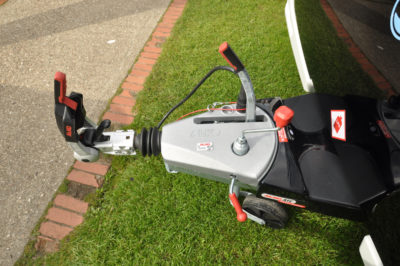
Approved workshop
Member of a scheme operated by trade body the National Caravan Council (see below), which inspects and lists specialist service centres capable of carrying out all levels of work on all aspects of a touring caravan.

Awning
Extra shelter or living space for any caravan. A tent-like structure that fixes to your ‘van via the awning rail, to give you extra seating/sleeping/storage space. This can be a porch or a full awning.
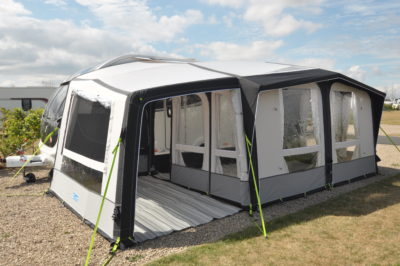
Wind-out canopies are also sometimes referred to as awnings, but these typically only offer overhead shelter (although walls and fronts can be added).
Barbecue point
An external gas socket on the caravan, ideal for connecting to a suitable barbecue or alternative outdoor gas cooking appliance.
B+E test
You’ll need to take a B+E test if your car and caravan outfit weighs more than 3,500kg (if the caravan weighs more than 750kg) and you passed your driving test after January 1997.
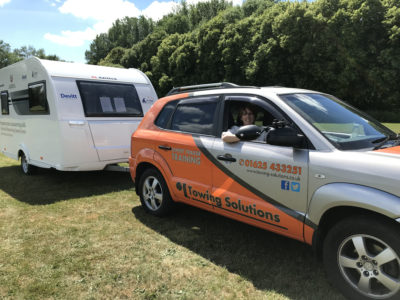
Berths
The number of people a caravan can accommodate in terms of beds.
Bike rack or cycle rack
A popular option for carrying bikes on the exterior of a caravan. Some caravans have mounting points for such racks on their rear panels. Others have the facility to add a bike rack to the A-frame.
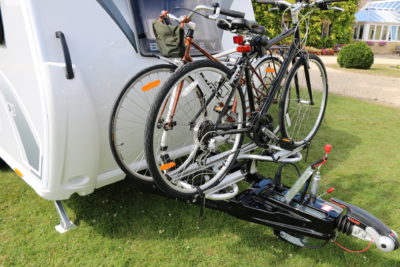
Blown-air
A system of heating a caravan, using a network of pipes and outlets throughout the living quarters.
Breakaway cable
A breakaway cable is a clip and wire that acts as a failsafe, applying the caravan’s brakes if, for any reason, your caravan becomes detached from your tow vehicle.

Campsite
An area of land that’s officially licensed to offer overnight stays for caravans. Facilities vary widely, but must start with a suitable supply of fresh water and somewhere to dump waste. Some sites go on to offer club houses, bars, eateries, swimming pools, play areas, dog walking facilities, fishing lakes and more. Sometimes known as holiday parks.
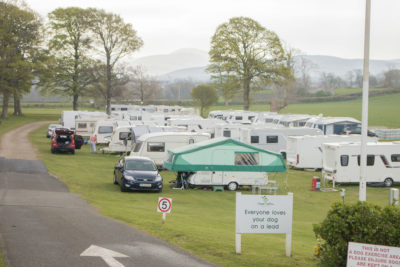
Caravan
A home on wheels. Strictly, a touring caravan (to distinguish it from a “static” (caravan holiday home). The Caravan Sites and Control of Development Act of 1960 defines a caravan as: “…any structure designed or adapted for human habitation which is capable of being moved from one place to another whether by being towed, or by being transported on a motor vehicle or trailer, and any motor vehicle so designed or adapted.”
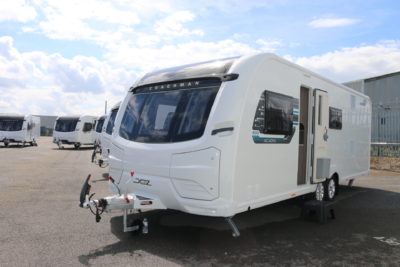
Cassette toilet
A plumbed-in, flushing (electric or, less commonly these days, manual) toilet with a holding tank (cassette) that can be easily removed when you want to discharge its contents. Specialist chemicals keep it clean and smelling fresh.
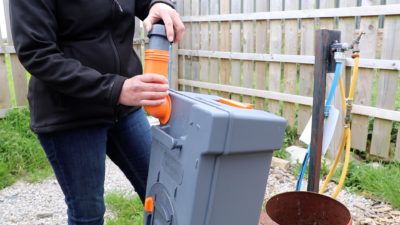
CaSSOA
Caravan Storage Site Owners’ Association. UK organisation representing those who own sites designed for the secure storage of caravans when their owners aren’t using them.
CDP Chemical Disposal Point
A designated dump station on a campsite for emptying toilet cassettes.
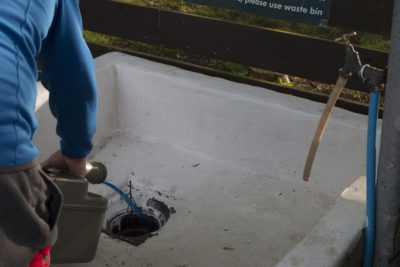
Central heating
Usually a reference to a “wet” central heating system of boiler, pipework and radiators (i.e. like at home).
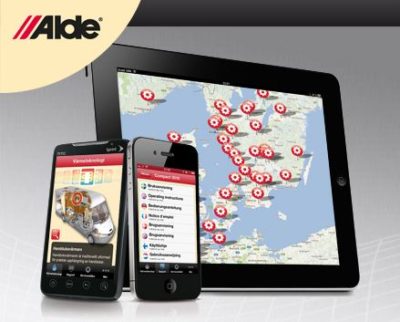
Chassis
The running gear – that is the frame and wheels etc – that underpins any caravan and on which the body is built.
Corner steady
Brackets with feet at each corner of the caravan. Winding them down makes sure your caravan stays stable and doesn’t rock when it’s pitched.
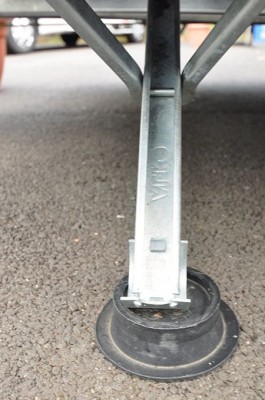
CRiS
Central Registration and Identification Scheme. A registration system for caravans, that helps to prove ownership, if you’re buying pre-owned and/or the police want to identify the owner of a stolen unit. A major deterrent to theft and is needed in the event of an insurance claim.
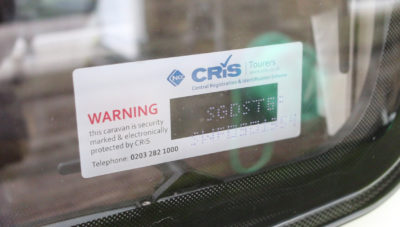
Dinette
A type of seating arrangement where two seats (they can be singles or doubles) face each other at either side of a table.
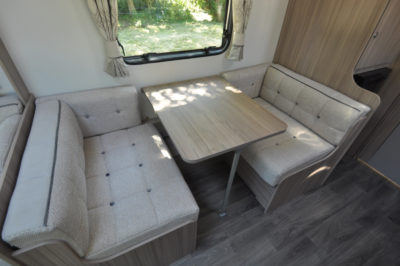
85% Guide
An industry-wide guideline relating to the heaviest weight of caravan your car can tow. Aimed especially at newcomers to towing, it suggests you tow with your caravan no more than 85% of your vehicle’s official kerbweight figure.
Extra-wide
A reference to the overall width of a caravan body when it’s near the UK’s allowable maximum of 2.55m or 8ft.
French bed
A permanent double bed with a cutaway section at the foot end (usually, to allow easier access to the washroom).
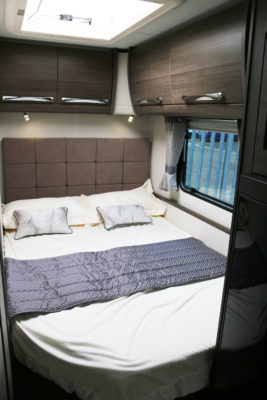
Full-timing
Living permanently in a caravan.
Grey water
Any waste water created as a result of using your caravan’s appliances, except toilet waste (which sometimes known as black water to differentiate it). Grey water is collected in a separate tank you connect up to your caravan when you pitch it, such as a WasteMaster.
GRP
Glass Reinforced Plastic (also known as glass-fibre or fibreglass) is a particularly durable product that’s often used in the manufacture of caravans – for anything from small panels to whole bodies.
GTW
Gross Train Weight. The maximum weight of a car and caravan outfit, as determined by the car manufacturer.
Hitch or tow hitch
The very front of a caravan chassis. It drops and locks onto the towball when you connect (or hitch up) your caravan to your car.
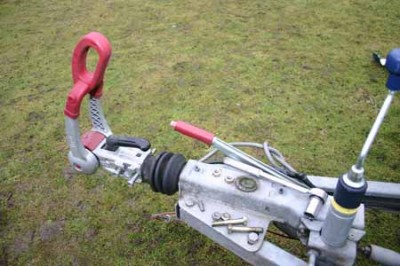
Hitchlock
A security device that fits to the caravan’s hitch to prevent it being coupled up to a vehicle with a towbar.
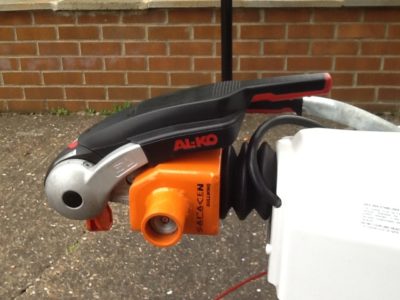
Island bed
A permanent double bed (sometimes retractable) with access around three sides. It can be lengthways or transverse (across the width of the caravan).
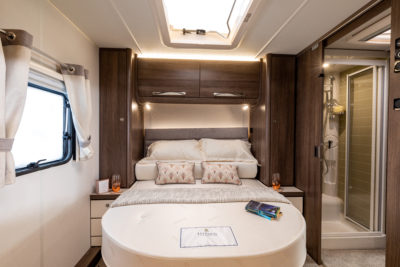
Inverter
A device for changing 12V power to 230V
Insurance
A pre-requisite, although not a legal obligation, for any caravan. Specialist caravan insurance will provide cover for accidental damage, storm damage, road accidents, fire, theft and vandalism, whilst the caravan is being towed, pitched up or in storage. Cover will also be provided for caravan equipment such as awnings.
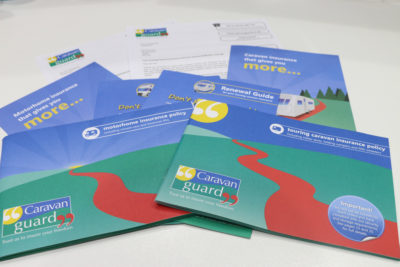
Jockey wheel
The small wheel at the front of the caravan. Height adjustable, it helps with the lowering of the hitch onto the towball when hitching up (reversing the process when unhitching), before retracting for travel. It also helps with smaller manoeuvres of your caravan.
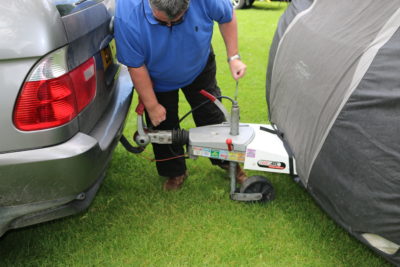
Leisure battery
Sometimes referred to as an auxiliary battery, or just battery, this is what provides a consistent supply of 12V power to a caravan’s electrical systems. Not to be confused with similar-looking starter batteries for engines.
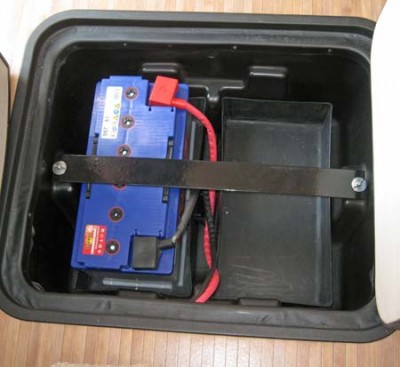
Levelling ramps or chocks
Wedges to level up your caravan when you’re otherwise pitched unevenly. The more level you can get your ‘van, the more efficient aspects such as water supply and drainage will be, plus the workings of fittings such as the fridge and cooker…and not forgetting seating and bedding comfort!
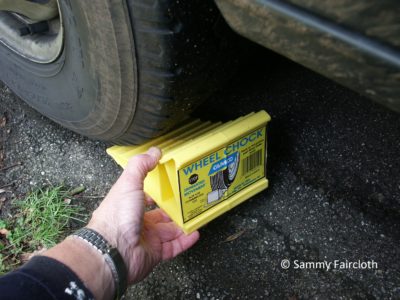
LPG (Liquefied Petroleum Gas)
Butane or propane, the type of gas used to fire appliances such as cookers, heating and hot water systems in caravans via a gas cylinder/s.
Mains hook-up (or simply just hook-up)
A connection that allows you to plug-in to mains electricity when you’re pitched up on a campsite and/or parked at home.
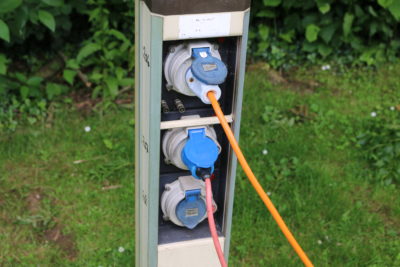
MiRO Mass in Running Order
Formerly known as ex-works weight, this is the unladen weight of a caravan, also taking into account the carrying of a single gas cylinder, full tank in the water heater and mains hook-up lead.
Motor mover
A caravan motor mover is a very popular accessory. An electric motor that applies to the caravan’s wheels to allow easy manoeuvring via a remote control in tight spaces.
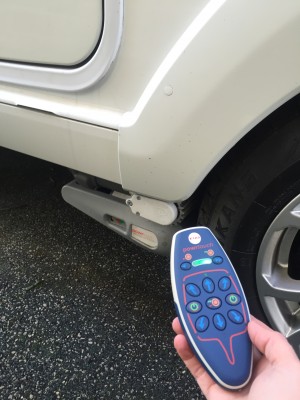
MTPLM Maximum Technically Permissible Laden Mass
The absolute highest weight of a caravan taking into account MiRO plus overall payload capacity.
NCC National Caravan Council
The trade body for caravans in the UK, also the organiser of the UK’s two largest caravan shows. Key players across the industry – manufacturers, retailers, campsite operators, accessories suppliers and more (including Caravan Guard) are NCC members.
Noseweight
The weight exerted on the towball by your loaded caravan. Having the correct noseweight is vital to towing stability.
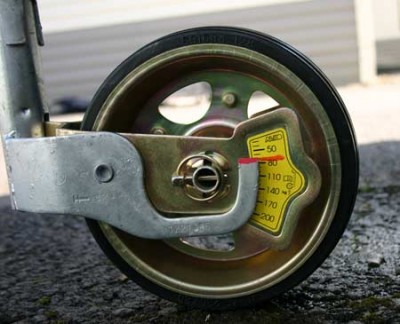
Outfit
Your tow car and caravan, together.
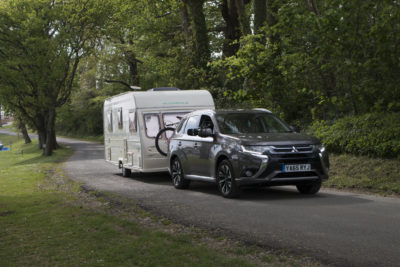
Payload
The weight of load allowed for luggage and personal belongings in your caravan. It’s usually expressed as the MTPLM minus the MiRO.
Pitch
A designated spot on a campsite for a caravan to stay overnight. Pitches can be grass or hardstanding (i.e. concrete, asphalt or gravel) and usually come with plug-in facilities starting with mains hook-up, but possibly also fresh water tap, waste water disposal, even connection to a TV aerial (in which case they’re often referred to as serviced pitches or super pitches). A seasonal pitch is where a caravan is permanently sited.
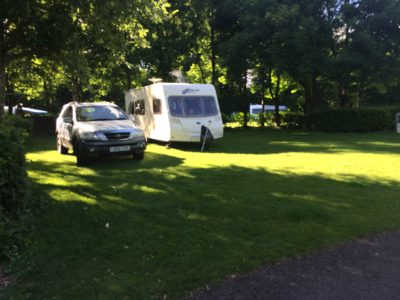
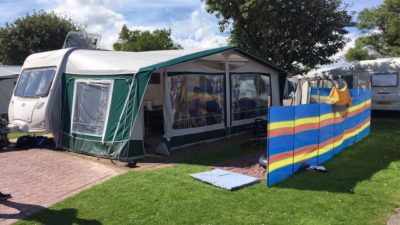
Regulator
Usually a reference to the fitting that allows the flow of gas from the cylinder to the appliances onboard any caravan.
Single axle
A caravan with just one axle (and two main wheels).
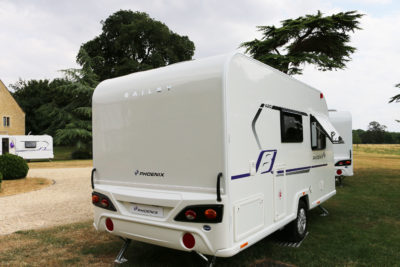
Snake or snaking
The swaying action you can get when a caravan is poorly loaded, and/or going too fast.
Stabiliser
A clamping device designed to help overall towing stability and prevent snaking, as well as pitching (any exaggerated up and down movement). Sometimes referred to as an anti-snaking device, although another product on the market is ATC, a trailer control system from chassis manufacturer Al-Ko.
Touring caravan or tourer
The term sometimes used to differentiate a caravan that you can tow and a holiday caravan (“static”).
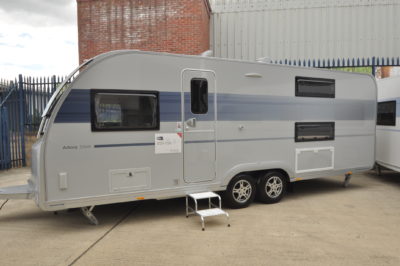
Towball
The end of a towing bracket to which you attach your caravan.
Towbar
The mainly hidden structure of a towing bracket, as fitted to the towing vehicle.
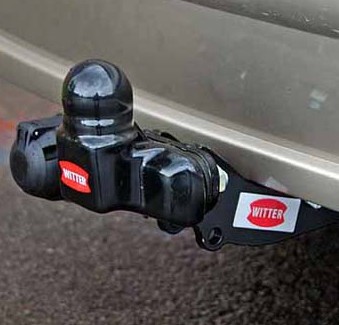
Towing limit or maximum towing limit
The highest weight your car can legally tow. This can sometimes be significantly more or indeed less than the 85% guideline figure.
Towing mirrors
Towing mirrors are required by law in most instances when towing a caravan, in order to maintain a suitable rearwards view whilst driving. These simply affix to the towing vehicle’s original wing mirror housings.
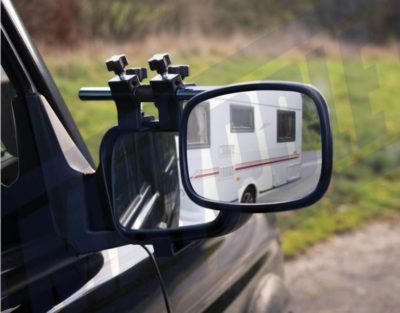
Towing socket
The electrical connections between towing vehicle and caravan. Modern-day towing sockets are typically 13-pin, but traditionally they had seven pins. Once connected using the appropriate cable, the exterior lights and internal fittings such as the fridge will operate whilst you’re driving.
TPMS Tyre Pressure Monitoring System
A safety accessory that allows you to keep a real time eye on the condition (pressure and temperature) of your tyres from the safety of your car via a monitor.
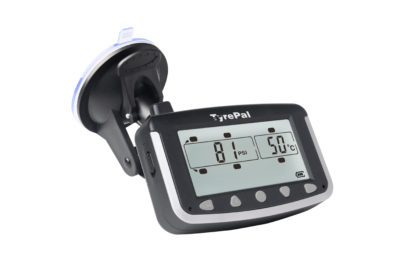
Tracking system
A caravan tracking device is a security fitting that allows you to follow the journey of your caravan if it has been moved without your consent. A proactive tracking system can be used to alert the police to the vehicle’s whereabouts via a monitoring centre.
Transverse bed
A permanent bed, such as a bunk, French or island, that sits across the vehicle
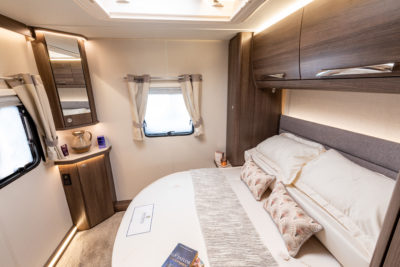
Twin axle
A caravan with two axles, i.e. four wheels. It makes for greater stability when towing, at the expense of being slightly trickier to manoeuvre in very tight situations.
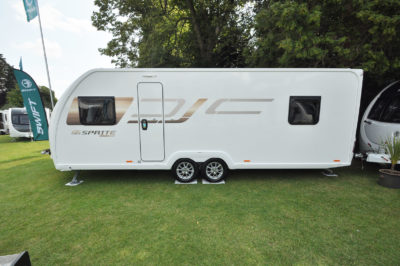
Twin beds
Two single beds that are across from each other.
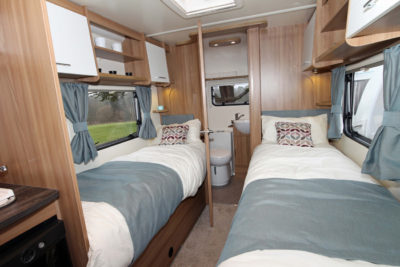
Water ingress
A particular problem where water gets into the body of a caravan
‘Van
Shortened name for a caravan.
VIN Chip
An anti-theft system using RFID (radio frequency identification), window stickers and QR codes as a guard against caravan theft and a means of police identification if a caravan is stolen.
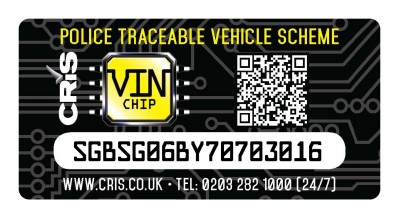
VIN plate
A plate put on the caravan at the time of manufacture to give its unique Vehicle Identification Number, along with manufacturer, key weight details and original year of manufacture.
Warden
Widely used term for a member of staff on a campsite. Other terms include holiday site managers, hosts or simply site staff.
Water carrier
A water container which allows you to transport fresh water to your caravan. This is then connected via an inlet hose. A common water carrier is the Aquaroll.
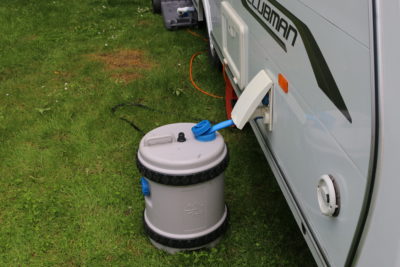
Waste water container
This fits under your caravan to collect grey water, such as shower and sink water. A common wastewater container is a WasteMaster.
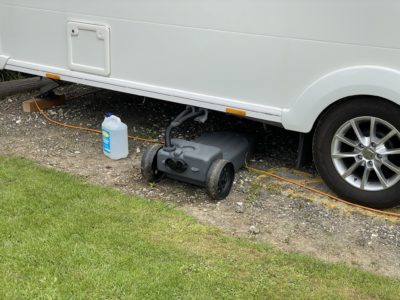
Wheel clamp
A security device that clamps around any of the caravan’s main wheels. It also acts as a visual deterrent to any would-be thieves.
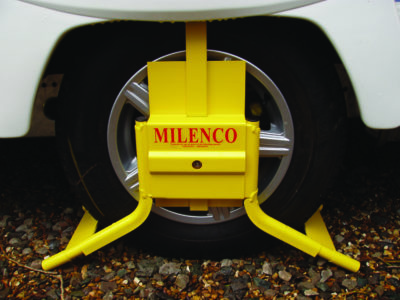
Wheel lock or axle wheel lock
A security device that locks through the wheel of a caravan and on to the caravan’s chassis via a wheel lock receiver.
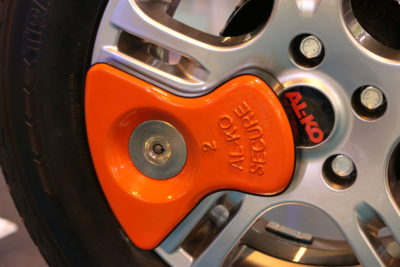
Wild camping
Using your caravan for overnight stays anywhere other than on an official campsite (or your home).
What have we missed from our caravan glossary?
Think we’ve forgotten to mention something in our caravan glossary? Why not leave a comment below and we’ll do our best to keep this updated.
Look out also for the Caravan Guard motorhome glossary.


Have noticed in the item about waste water equipment,the caravan in question is wired up with cable wrapped around a cable reel.Not advisable as the cable can overheat and could go on fire.Just like an element on an electric fire.Regard’sJ.K.l
You’re absolutely right John. We’ve replaced that image